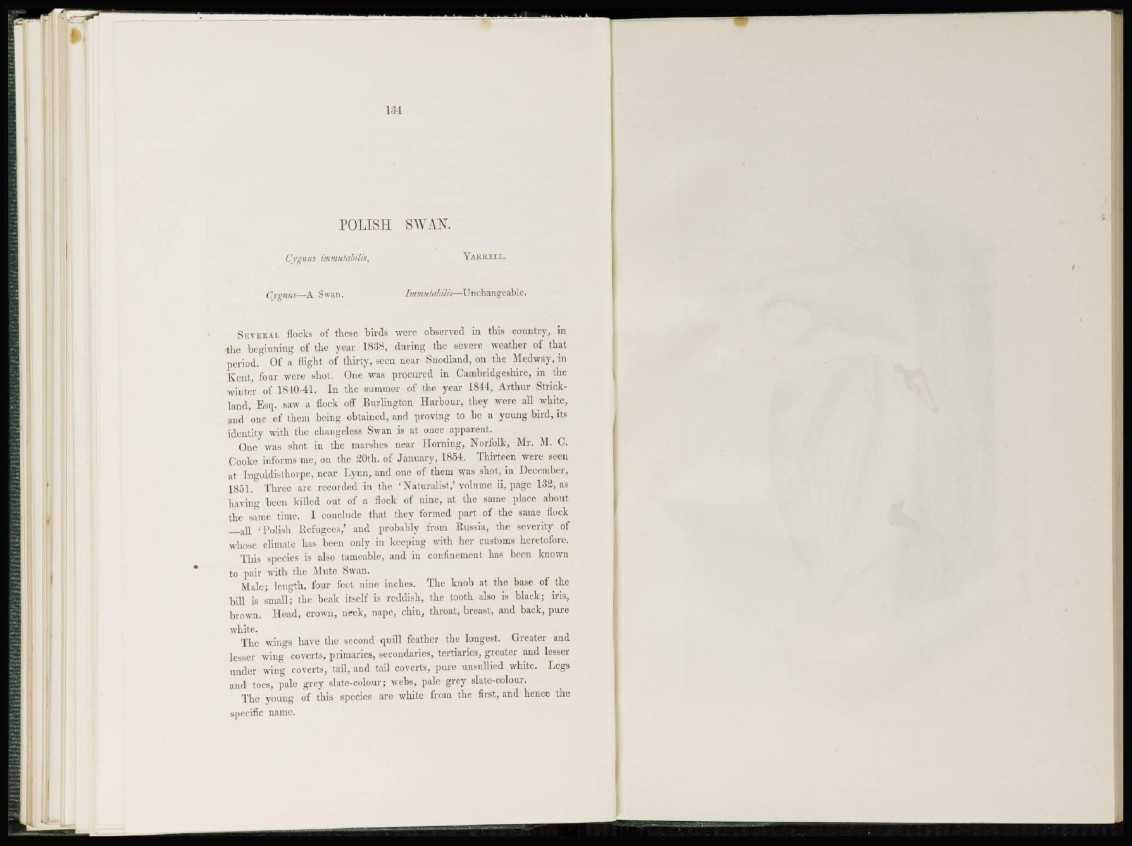
P O L I S H SWAN.
Cygnus immutahilis, YAKRELL.
Cygnus—A Swan. fmrnn/iihiUs—Unchangeable.
SEVERAL flocks of these birds were observed in this country, in
the beginning of the year 1838, during the severe weather of that
period. Of a flight of thirty, seen near Snodland, on the Medway, in
Kent, four were shot. One was procured in Cambridgeshire, in the
winter of IS 10-41. In the summer of the year 1844, Arthur Strickland,
Esq. saw a flock off Burlington Harbour, they were all white,
and one of them being obtained, and proving to be a young bird, its
identity with the changeless Swan is at once apparent.
One was shot in the marshes near Horning, Norfolk, Mr. M. C.
Cooke informs me, on the 20th. of January, 1854. Thirteen were seen
at Ingoldistliorpe, near Lynn, and one of them was shot, in December,
1851. Three are recorded in the 'Naturalist,'volume ii, page 132, as
having been killed out of a flock of nine, at the same place about
the same time. I conclude that they formed part of the same flock
—all ' Polish Refugees,' and probably from Russia, the severity of
whose climate has been only in keeping with her customs heretofore.
This species is also tameable, and in confinement has been known
to pair with the Mute Swan.
Male; length, four feet nine inches. The knob at. the base of the
bill is small; the beak itself is reddish, the tooth also is black; iris,
brown. Head, crown, nrck, nape, chin, throat, breast, and back, pure
white.
The wings have the second quill feather the longest. Greater and
lesser wing coverts, primaries, secondaries, tertiaries, greater and lesser
under wing coverts, tail, and tail coverts, pure unsullied white. Legs
and toes, pale grey slate-colour; webs, pale grey slate-colour.
The young of this species are white from the first, and hence the
specific name.